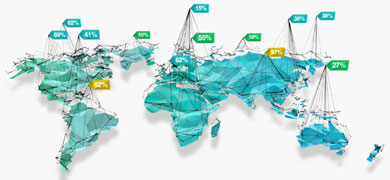Second year of releases under climate-related disclosures regime now underway
New Zealand’s climate-related disclosures regime came into effect for reporting periods beginning on or after 1 January 2023 and the first rounds of annual reports were released in 2024. The reporting regime mandates that New Zealand’s most economically significant entities, such as large publicly listed companies, must release annual “climate statements” describing the potential impact of their operations on the climate and how the climate could affect their businesses. As Nikko Asset Management New Zealand is among the reporting entities covered by the regime and considers climate factors when constructing portfolios, we have gained insights into the process through our own experiences and discussions with other organisations such as investee companies. Now that the second year of reporting is underway, we would like to share some of the benefits and challenges we have found in the reporting process.
Scenario analysis aspect of reporting seen providing new insights
In our view, the new regime has been a significant factor in encouraging asset managers, listed companies and others to not only report on climate change but also actively consider its implications. From our perspective as a reporting entity, one element of the process that has given us a fresh perspective is the scenario analysis section, for which entities are required to consider the implications of multiple potential climate scenarios. This part of the process was new to us, and over the past year we have completed two yearly scenario analyses as prescribed by the legislation. We found this part useful in terms of identifying where the largest climate risks and opportunities are likely to arise. As one example, in view of the ongoing momentum in working towards net-zero emissions targets seen in New Zealand, Australia and elsewhere, we believe it is important to identify winners in spaces that are likely to benefit from those initiatives. Our work in considering climate scenarios has also given us a strong base to inform our engagement with investee companies.
Lack of report standardisation among challenges seen in process
One of the main challenges we have found in the process is that there is room for improvement in the standardisation and readability of the reports. The appearance of climate statements can vary depending on the reporting entity. This variation also applies to the underlying data used, as some report makers calculate the required figures in-house whereas others use third parties. In addition, we feel that the disclosure requirements can be a barrier for listing on a stock exchange, especially for smaller companies without the resources or the time needed to comply with them. In view of these kinds of challenges, New Zealand’s External Reporting Board conducted a consultation on scope 3 emissions (indirect emissions that occur throughout a reporting entity’s entire value chain) in 2024. The board is carrying out two consultations in 2025, one of which has already been launched and covers the possibility of international alignment in climate reporting standards. The second consultation scheduled for this year will examine the potential need for reduced disclosures for smaller reporting entities and differential reporting options. We see these as welcome consultations and will be monitoring them closely.






